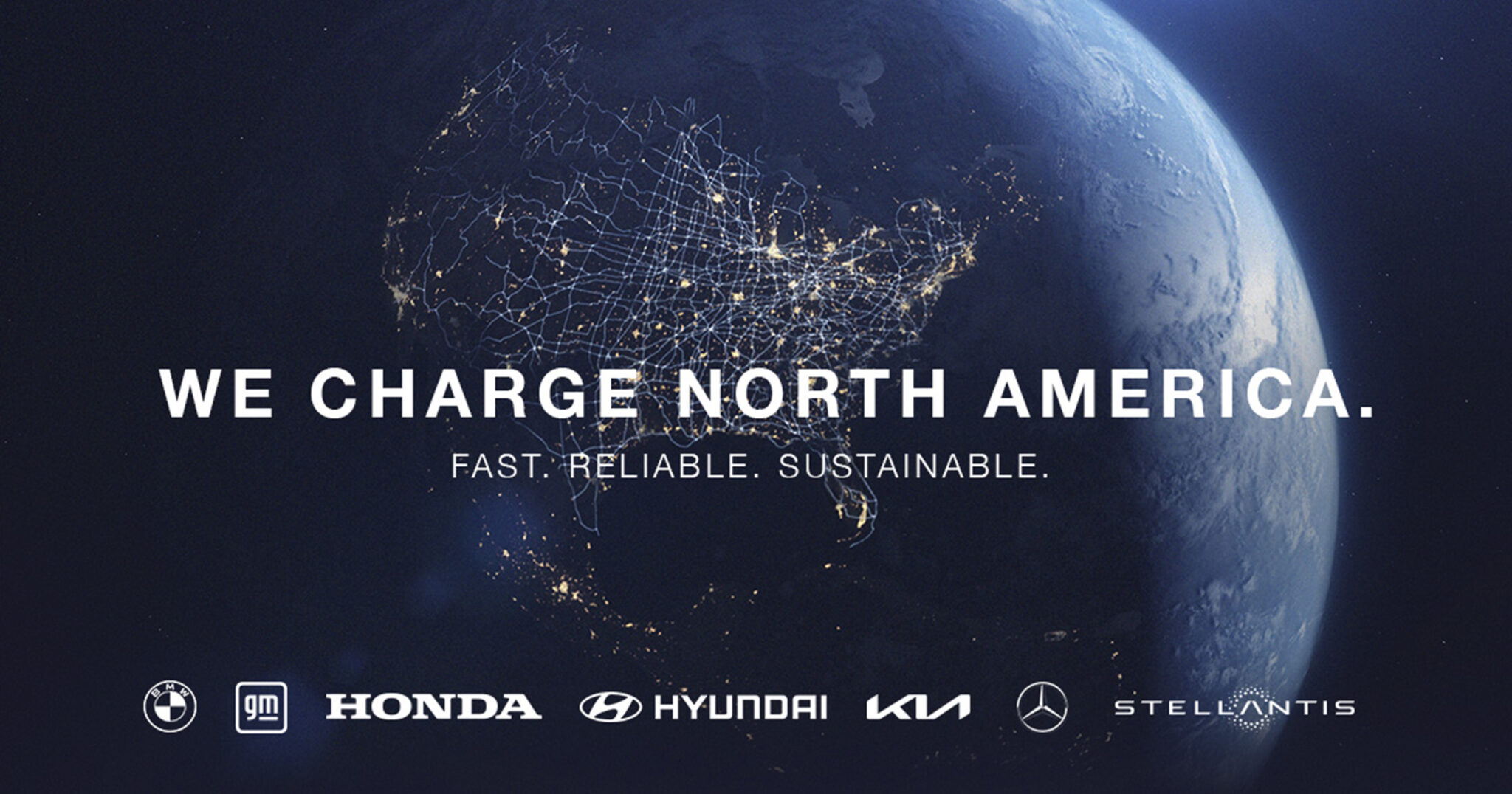window.dataLayer = window.dataLayer || []; function gtag(){dataLayer.push(arguments);} gtag('js', new Date()); gtag('config', 'G-0RQ7VDBZ87');

Seven Global Automakers
Seven global automakers aim to build the leading nationwide charge network for electric vehicles. Titled “We Charge North America,” the initiative will establish a network of high-powered charging stations along the roads in North America. Napleton News has advocated to expand a reliable charge network and this plan is a case of doing just that.
The new initiative results from talks and an agreement between Mercedes-Benz Group, BMW Group, General Motors, Honda, Kia, Hyundai and Stellantis NV.
Highlights of the agreement include:
The goal of at least 30,000 new chargers is to make zero-emission driving even more attractive for millions of EV owners.
Federal and state government investments are being used to help this joint venture leveraging public and private funds. The goal is to accelerate installation of high-powered chargers for customers. Simply put, the more fast chargers, the more electric vehicle customers.
The new chargers are expected to meet or exceed the spirit and requirements of the U.S. National Electric Vehicle infrastructure (NEVI) program. Members of this joint venture aim to be the leading network of reliable high-powered charge stations in the U.S. and Canada.
The initial charging stations will come online in the U.S. during summer 2024. Canadian stations will appear soon after. Each facility will include multiple high-powered DC chargers, which they think will make long distance traveling more workable for most drivers. The charging network will be powered by renewable energy.
By increasing the quality of the high-powered charging station, the seven manufacturers hope to elevate or lift the entire EV experience. This will increase the adoption of electric vehicles across the continent.
The new network will have a customer service focus. They will be located in convenient locations with canopies wherever possible and amenities. These will include food service and restrooms as well as other retail operations nearby or in the same complex. There are plans for flagship stations that will feature additional amenities and a premier experience showcasing the future of charging.
Initially, the charging stations will be located in metropolitan areas and along major highway and vacation routes. These will focus on places where people choose to work, live and travel.
The charging network will provide seamless integration with the automakers’ in-vehicle and in-app experiences. These will include reservations, navigation, route planning, payment apps and more.
As more EVs are introduced to market, the demand for improved charging will, of course, increase. U.S. electric vehicle sales are expected to exceed 50% of total sales by 2030. With that type of growth, reliable charging stations will become even more critical to EV adoption.
The creation of a best-in-class charging network will make sure the EV infrastructure will support current and projected EV growth.
This post was published on October 25, 2023
Napleton News presents the Toyota 4Runner Video Review The Toyota 4Runner has amazed those in… Read More
Volkswagen Atlas Review and walkaround video The new Volkswagen Atlas full sized SUV is a… Read More
The 2024 Kia Sorento Hybrid is the best of several worlds. It’s a family SUV.… Read More
The Subaru Crosstrek started as a gimmick for the brand, but quickly became one of… Read More
Its parent company has a long history of building strong, potent and powerful vehicles for… Read More
There are many cars on the road today like the Cadillac CT4-V. But the question… Read More